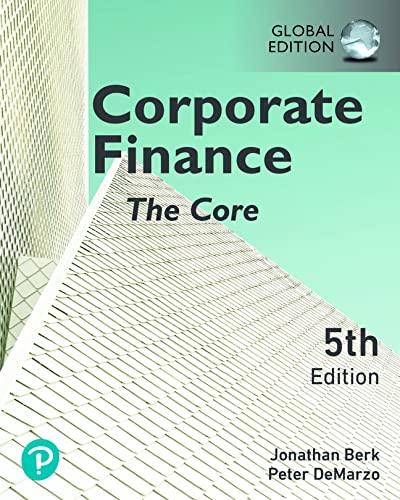In Problem 20, assume the risk-free rate is 3% and the market risk premium is 7%. a.
Question:
In Problem 20, assume the risk-free rate is 3% and the market risk premium is 7%.
a. What does the CAPM predict the expected return for each stock should be?
b. Clearly, the CAPM predictions are not equal to the actual expected returns, so the CAPM does not hold. You decide to investigate this further. To see what kind of mistakes the CAPM is making, you decide to regress the actual expected return onto the expected return predicted by the CAPM.49 What is the intercept and slope coefficient of this regression?
c. What are the residuals of the regression in (b)? That is, for each stock compute the difference between the actual expected return and the best fitting line given by the intercept and slope coefficient in (b).
d. What is the sign of the correlation between the residuals you calculated in
(b) and market capitalization?
e. What can you conclude from your answers to part b of the previous problem and part d of this problem about the relation between firm size (market capitalization) and returns? (The results do not depend on the particular numbers in this problem. You are welcome to verify this for yourself by redoing the problems with another value for the market risk premium, and by picking the stock betas and market capitalizations randomly.50 )
AppendixLO1
Step by Step Answer:

Corporate Finance The Core
ISBN: 9781292431611
5th Global Edition
Authors: Jonathan Berk, Peter DeMarzo





